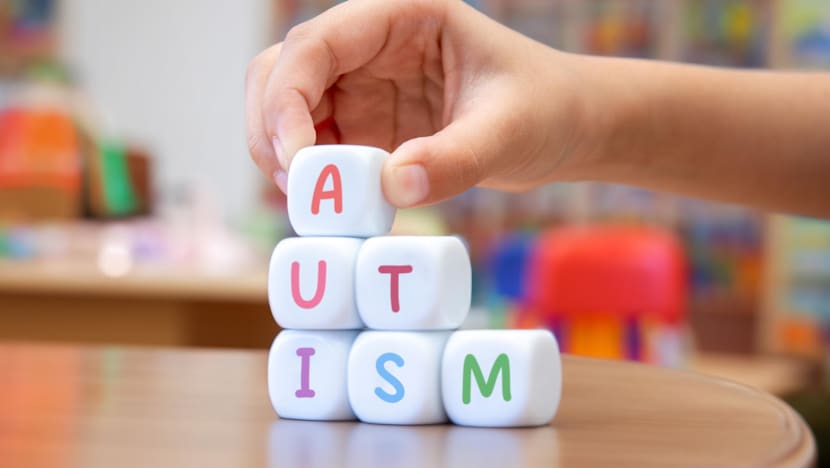World
Rethinking the Autism Spectrum: A Call for New Definitions

The widely used terms “autism spectrum” and “on the spectrum” have sparked ongoing discussions about their implications for understanding autism. Established by psychiatrist Dr Lorna Wing in the 1980s, the concept aimed to broaden perceptions of autism beyond a narrowly defined condition. However, experts are now questioning whether this idea remains relevant, arguing that it may misrepresent the complexities of autism.
The Limitations of a Linear Spectrum
Many people envision a simple linear spectrum when they hear the word “spectrum,” likening it to a gradient of colours. This visual representation suggests a ranking of individuals from “more autistic” to “less autistic.” Yet, autism encompasses a diverse array of traits and experiences that cannot be accurately reflected on a single line. For instance, some autistic individuals may depend heavily on routines, while others find comfort in repetitive movements known as “stimming.” Additionally, the concept of “monotropism” describes intense focus on specific interests, complicating the simplistic spectrum model.
Attempts to categorize autism persist, notably through the American Psychiatric Association’s diagnostic manual, which assigns autism to three levels based on the degree of support required. These levels range from level 1, which indicates a need for support, to level 3, which signifies a need for very substantial support. Critics argue that these classifications are often vague and inconsistently applied, failing to capture the nuanced realities of individuals’ lives. Moreover, life circumstances can significantly alter a person’s support needs. An autistic individual who typically manages well may experience “burnout,” increasing their requirement for support if their needs have gone unaddressed.
Revisiting Labels and Their Implications
In light of these complexities, some researchers have proposed the term “profound autism” to describe individuals with significant learning disabilities or high support needs. Nevertheless, experts caution that this label provides little insight into an individual’s specific challenges or the assistance they require. The legacy of terms like “Asperger’s syndrome,” introduced by Dr Lorna Wing, further illustrates the pitfalls of categorization. This label, derived from Austrian physician Hans Asperger, has become contentious due to its historical associations with the Nazi regime, which targeted individuals with higher support needs. As a result, many autistic individuals prefer to avoid the term entirely.
Underlying these discussions is a critical concern: categorizing autistic individuals can lead to judgments about their societal value. In the most extreme instances, such hierarchies may dehumanize those requiring greater support. Some advocates warn that these categorizations could inadvertently support harmful political agendas, especially in light of recent statements from Robert F. Kennedy Jr., the US health secretary, who referred to autism as a “nationwide epidemic.” Such rhetoric can evoke fears among autistic communities, particularly when unfounded claims about autism causation emerge.
While some individuals use terms like “autism spectrum” as a softer alternative to describing someone as autistic, this language can perpetuate the notion that being autistic is inherently negative. Many autistic adults prefer direct language, asserting that autism is not a matter of severity but rather an intrinsic aspect of their identity. Language significantly influences societal attitudes and behaviors, and moving away from the notion of a singular spectrum may help in recognising the rich diversity within the autistic community.
As discussions evolve, it is essential to consider how these labels shape the perception and treatment of autistic individuals. Emphasizing the idea of autism as a difference rather than a defect may foster a more inclusive understanding. By embracing the diversity of experiences within the autistic community, society can begin to value individuals based on their unique contributions rather than their perceived needs.
This commentary reflects insights from Aimee Grant, Associate Professor in Public Health and a Wellcome Trust Career Development Fellow at Swansea University. The article originally appeared in The Conversation.
-

 Lifestyle4 months ago
Lifestyle4 months agoHumanism Camp Engages 250 Youths in Summer Fest 2025
-

 Business5 months ago
Business5 months agoKenvue Dismisses CEO Thibaut Mongon as Strategic Review Advances
-

 Sports4 months ago
Sports4 months agoDe Minaur Triumphs at Washington Open After Thrilling Comeback
-

 Sports5 months ago
Sports5 months agoTupou and Daugunu Join First Nations Squad for Lions Clash
-

 Top Stories5 months ago
Top Stories5 months agoColombian Senator Miguel Uribe Shows Signs of Recovery After Attack
-

 World5 months ago
World5 months agoASEAN Gears Up for Historic Joint Meeting of Foreign and Economic Ministers
-

 Health4 months ago
Health4 months agoNew Study Challenges Assumptions About Aging and Inflammation
-

 Business5 months ago
Business5 months agoOil Prices Surge Following New EU Sanctions on Russia
-

 Entertainment4 months ago
Entertainment4 months agoDetaşe-Sabah Violin Ensemble Captivates at Gabala Music Festival
-

 Entertainment4 months ago
Entertainment4 months agoBaku Metro Extends Hours for Justin Timberlake Concert
-

 Top Stories5 months ago
Top Stories5 months agoRethinking Singapore’s F&B Regulations Amid Business Closures
-

 Business5 months ago
Business5 months agoU.S. House Approves Stablecoin Bill, Sends to Trump for Signature









